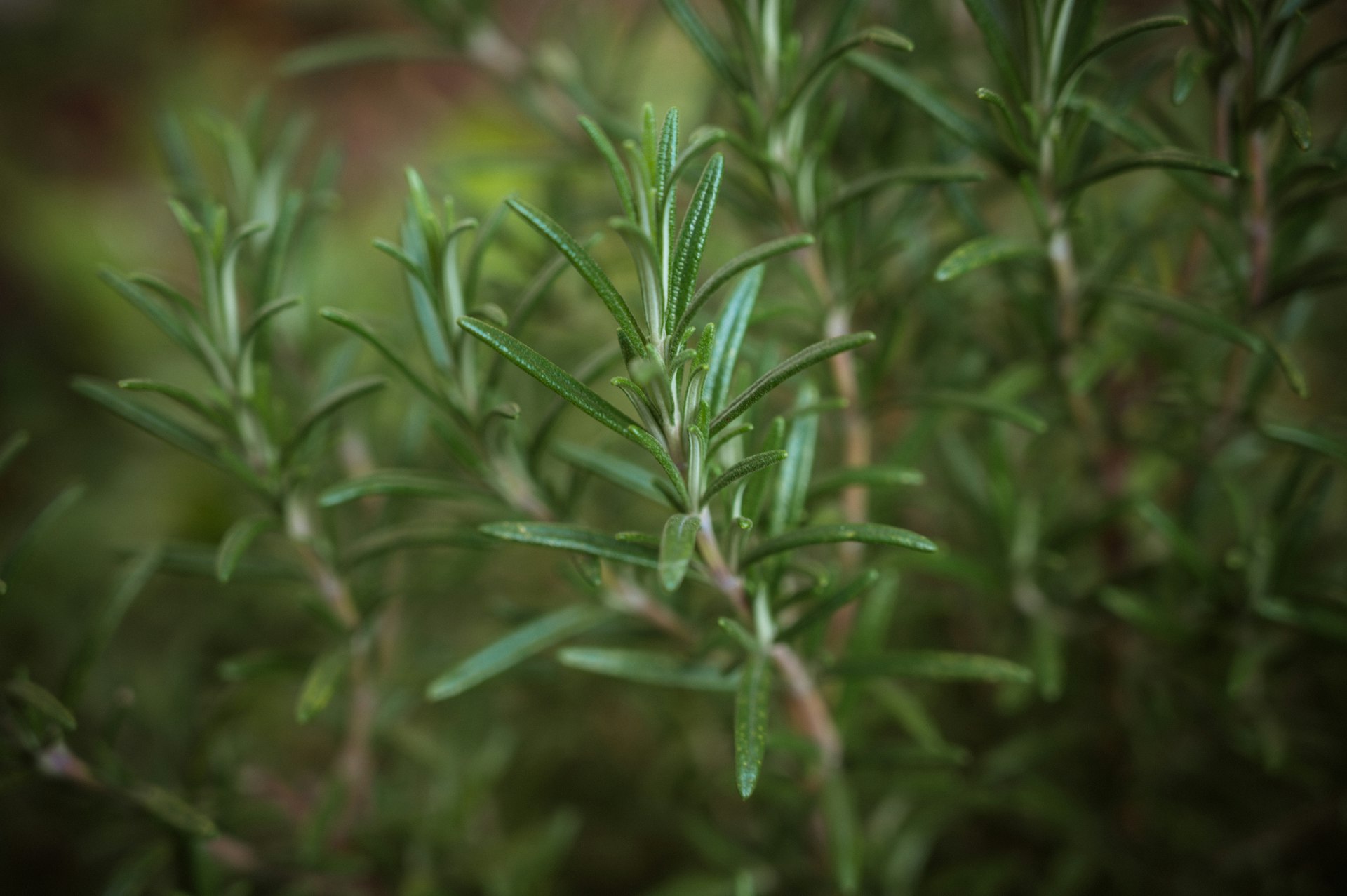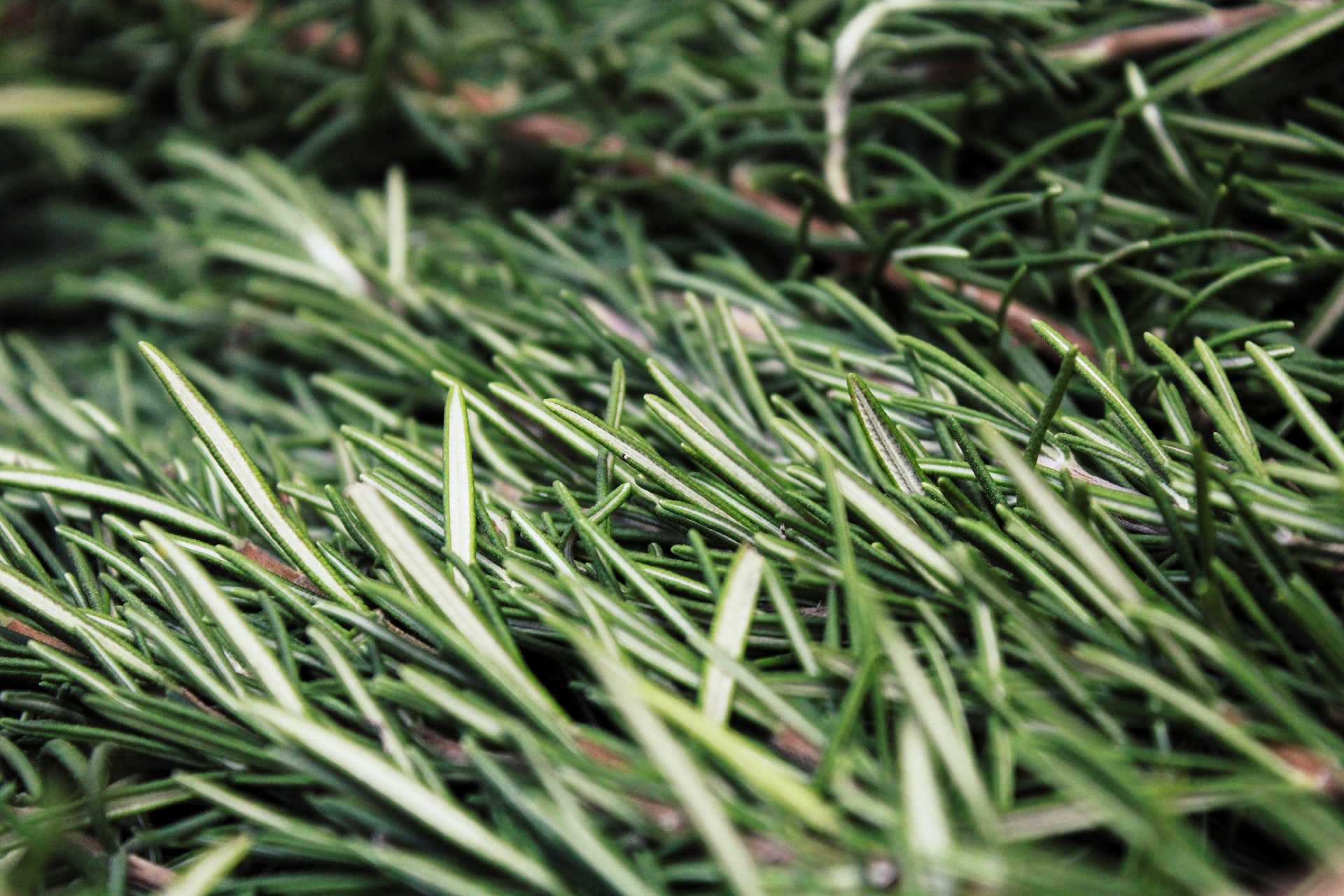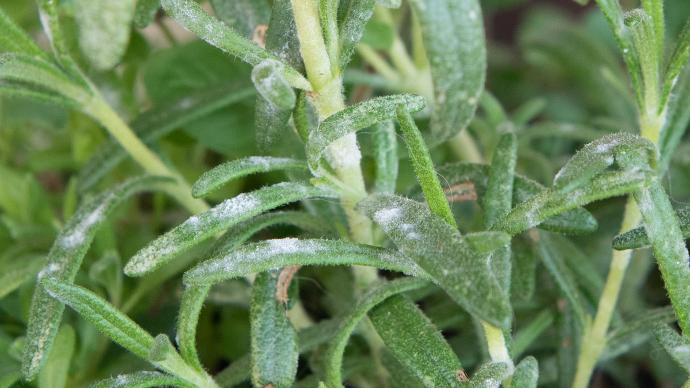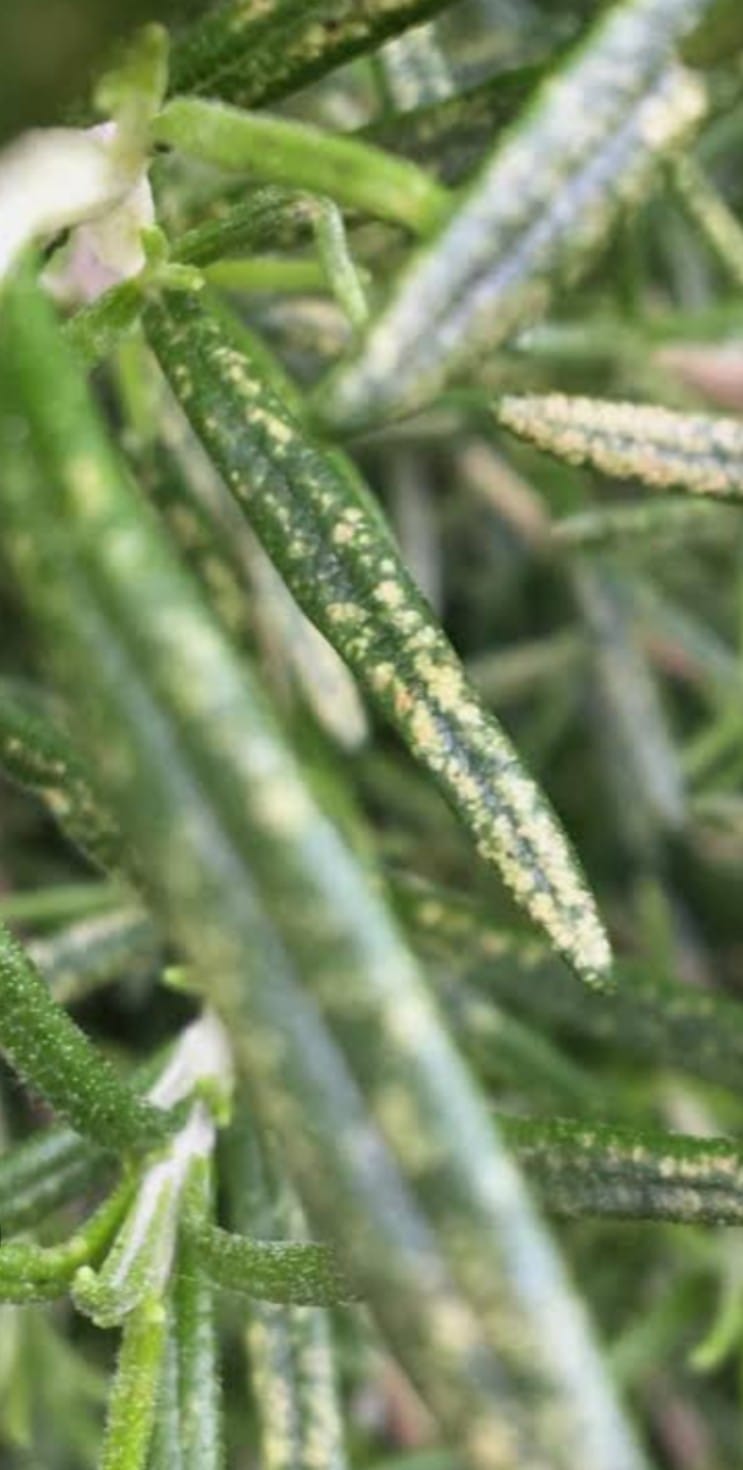Rosemary Plant
Rosemary is a frost-tolerant perennial herb that prefers full sun and well-drained, sandy-loam soil. It has slow growth and benefits from pruning.
Habit
Perennial
Height
50-150 cm
Growth
slow
Soil
Well-drained, sandy
Shade
Full Sun
Moisture
Moist
Edible
Yes
Medicinal
No
Origin
Mediterranean
Climatic Condition
Temperate, Dry Climate
Temperature (°)
10-30°C
Humidity (%)
30-60%
Potting media
Peat, compost
Fertilizers
Organic, nitrogen-rich
Watering
Low
Plant Weight
500 g - 2 kg
Flowering Time
Spring to Summer
Soil Ph level
5.5 - 7.5
Water Ph level
5.5 - 7.5
Soil EC
1-2 dS/m
Yield Per Plant
500 g - 2 kg
NPK ratio
05:10:10
life Span
Perennial
Health Benefits
Antioxidant, digestive aid, antimicrobial
Suggested Grow Media or Potting Mix ?
50% loam, 25% compost, 25% sand
Suggested Fertigation/Fertilizers
Fertilize every 4-6 weeks with a balanced fertilizer.
Common Diseases and Remedies
Phytophthora root , Powdery mildew.
Wilting, decline and plant death , White powdery spots or patches develop on leaves and stems.
Prevent standing water , Neem oil.
HEALTH BENEFITS
· Boosts memory, reduces inflammation, and supports digestion.
· Rich in antioxidants and antimicrobial compounds.
What Is A Rosemary?
Rosemary is an aromatic evergreen shrub in the Lamiaceae family, native to the foothills of the Mediterranean, Portugal, and northwestern Spain. Characteristic habitat of rosemary, south of France, near Pont du Gard. There it grows into a tall shrub 4 to 6 feet tall.

What are the different types of rosemary plants?
1. Upright:-
Tall, upright varieties include Tuscan Blue, Miss Jessup Upright, Astragalus Gold, and Portuguese Pink. Upright rosemary has wide leaves and is rich in aromatic oils.
2. Low spreading varieties: -
Low spreading varieties include Blue Lagoon, Collingwood Ingram, Lockwood De Forest, Rosea, Wendy's White.
3. Beneden Blue Prostrate: -
Prostrate varieties include: Includes Santa Barbara, Huntington Carpets, and Spice Island. Upright rosemary works well hanging from a wall or cascading from a container.
4. Trailing:-
Trailing rosemary varieties include Blue Rain. It may grow in small mounds in the ground, or it may grow over walls or over the edges of pots.

How do you care for rosemary?
1. Location: -
Requires bright sun, no shade. Plant it indoors, away from trees and in a south-facing window with full access to the sky.
2. Sunlight:-
Rosemary prefers full sun and cannot tolerate shade. This means that most days she needs at least 6 hours of direct sunlight. South-facing windows are ideal for indoor growing, and grow lights are often required to provide additional light.
3.Soil:-
Well-drained sandy or loamy soil is best for rosemary. It does not grow well in heavy clay or moist soils. A slightly acidic to neutral soil pH value (6.0 to 7.0) is ideal.
4. Hydration:-
Rosemary tolerates drought very well once the plant is established, so it is better to water sparingly than over-watering.

5. Nourishment :-
Rosemary is not a big eater. Mixing compost into the soil at planting time will help your shrub grow healthily. Then use a balanced liquid fertilizer and follow label directions to promote quality growth.
6. Issues:-
Overwatering The most common cause of plant death is overwatering. Root rot Powdery mildew Aphids Spider mites Low temperature
What are the benefits of the Rosemary plant?
As an antioxidant and anti-inflammatory, it strengthens the immune system and improves blood circulation.

FAQ's about growing rosemary plants
1. How to plant rosemary?
Rosemary should be planted in well-drained soil in full sun. You can start from seeds or cuttings.
2. How often should I water rosemary?
Rosemary prefers dry conditions. Therefore, water sparingly as soon as the soil feels dry, usually every 1-2 weeks.
3. Does rosemary need fertilizer?
Rosemary does not require much fertilizer. Feed sparingly with a balanced fertilizer once or twice during the growing season.
4. How to cut rosemary?
Prune rosemary regularly to maintain its shape and encourage bushier growth. Cut back a little after flowering or when the stock begins to grow.
5. Can rosemary survive cold weather?
Rosemary is hardy in USDA zones 8 through 10, but can tolerate some frost. In colder climates, consider growing them in pots that can be brought indoors during the winter.


